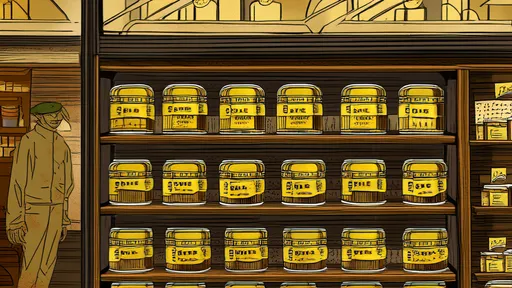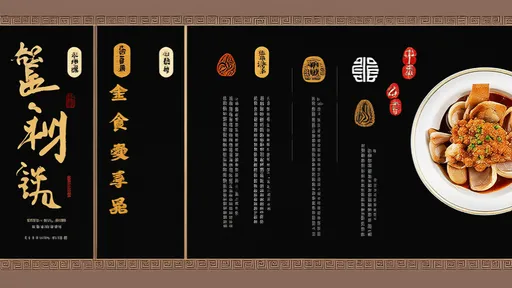In the annals of military history and culinary culture, few products have carved out a legacy as enduring and globally pervasive as Spam. Born from the urgent necessities of World War II, this humble canned meat product transcended its origins as a military ration to become an unlikely icon on dinner tables across the world. Its journey from the mess halls of Allied soldiers to becoming a staple in diverse cuisines is a testament to innovation, adaptability, and the unpredictable ways in which war can reshape everyday life.
The story of Spam begins not on the battlefield, but in the corporate laboratories of the Hormel Foods Corporation in Austin, Minnesota. In 1937, amid the economic struggles of the Great Depression, Jay C. Hormel sought to create an affordable, shelf-stable meat product that could provide nourishment to families during hard times. The result was "Spiced Ham," a canned pork product that was later rebranded as "SPAM" – a portmanteau believed to be derived from "Spiced Ham." However, it was the outbreak of World War II that would catapult this product into legendary status.
As nations mobilized for total war, the demand for durable, non-perishable food that could withstand long journeys and harsh conditions became paramount. Spam, with its long shelf life, high protein content, and resistance to spoilage, was perfectly suited for military needs. The U.S. government purchased millions of cans, shipping them to troops stationed across Europe, the Pacific, and other theaters of war. For soldiers far from home, Spam became a ubiquitous part of daily sustenance – sometimes a welcome relief from other monotonous rations, other times a source of weary jokes, but always a reliable source of energy.
The impact of Spam extended beyond American forces. Through the Lend-Lease program, vast quantities were sent to the United Kingdom and the Soviet Union, providing crucial support to Allied nations whose agricultural and distribution systems were severely disrupted by conflict. In Britain, where fresh meat was heavily rationed, Spam offered a vital protein alternative, finding its way into sandwiches, breakfast plates, and even inventive recipes created by homemakers striving to make the most of limited resources. Similarly, in the Soviet Union, it was received as a much-needed supplement to scarce food supplies.
When the war ended, Spam’s journey was far from over. Soldiers returned home with memories – and sometimes cravings – for the canned meat they had consumed during their service. Meanwhile, in war-ravaged regions like the Pacific Islands and parts of Asia, Spam had left a lasting impression. In places such as Hawaii, Guam, and the Philippines, where local infrastructures had been destroyed and traditional food sources disrupted, Spam remained available and affordable. It was seamlessly incorporated into local culinary traditions, giving rise to unique fusion dishes that endure to this day.
In Hawaii, for instance, Spam became so deeply ingrained in the local culture that it is often referred to as "the Hawaiian steak." It is featured in popular dishes like Spam musubi – a slice of grilled Spam atop a block of rice, wrapped in nori – and Spam fried rice. Similarly, in South Korea, Spam gained prestige during and after the Korean War, often given as a gift during holidays and used in dishes like budae jjigae, or "army base stew," a hearty mix of Spam, kimchi, instant noodles, and other ingredients that originated from the resourcefulness of post-war communities.
The global spread of Spam did not come without its critics. In the decades following the war, as concerns about processed foods and nutritional health grew, Spam was sometimes derided as a symbol of low-quality, industrial eating. Yet, its popularity never truly waned. Hormel adapted by introducing lower-sodium and reduced-fat variants, and Spam continued to hold a cherished place in many cultures, celebrated for its versatility, convenience, and nostalgic value.
Today, Spam is sold in over 40 countries and remains a cultural and culinary phenomenon. It is enjoyed in sandwiches diners, gourmet restaurants, and home kitchens alike. From its role in comforting soldiers during the darkest days of war to its status as a beloved ingredient in diverse global cuisines, Spam’s story is one of resilience and unexpected legacy. It serves as a reminder of how products born from necessity can evolve into enduring symbols of adaptation and cross-cultural exchange.
Reflecting on the journey of Spam offers more than just insight into a unique food product; it provides a window into the broader social and economic currents of the twentieth century. Through wars, economic shifts, and changing dietary trends, Spam has not only survived but thrived, securing its place not just in pantries, but in history.

By /Aug 29, 2025

By /Aug 29, 2025

By /Aug 29, 2025

By /Aug 29, 2025

By /Aug 29, 2025

By /Aug 29, 2025

By /Aug 29, 2025

By /Aug 29, 2025

By /Aug 29, 2025

By /Aug 29, 2025

By /Aug 29, 2025

By /Aug 29, 2025

By /Aug 29, 2025

By /Aug 29, 2025

By /Aug 29, 2025

By /Aug 29, 2025

By /Aug 29, 2025

By /Aug 29, 2025

By /Aug 29, 2025

By /Aug 29, 2025